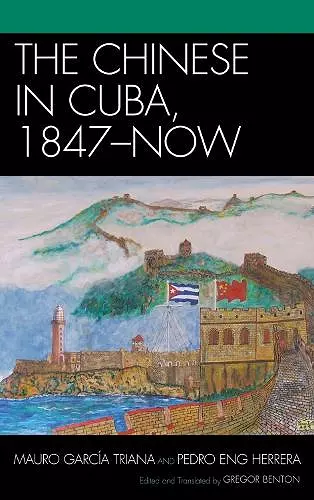The Chinese in Cuba, 1847-Now
Mauro García Triana author Pedro Eng Herrera author Gregor Benton translator
Format:Hardback
Publisher:Bloomsbury Publishing PLC
Published:16th Feb '09
Currently unavailable, and unfortunately no date known when it will be back

This collection of essays and documents explores the significant role of the Chinese community in Cuba from the nineteenth century to the present, highlighting their contributions to culture, politics, and revolutionary movements.
The Chinese in Cuba, 1847-Now is a comprehensive exploration of the Chinese community in Cuba, which was the second largest in the world during the nineteenth century, following that of the United States. This collection of essays and documents delves into the historical and contemporary evolution of this community, highlighting its significant contributions to Cuba's revolutionary history and social movements throughout the twentieth century. The text examines the role of Chinese immigrants in the fight for Cuban liberation and their impact on various aspects of Cuban culture, including music, art, cuisine, sports, and language.
At the heart of the book is a translated study by Mauro García Triana and Pedro Eng Herrera, who have dedicated years to researching the Chinese presence in Cuba. Their unique perspectives—Eng being of Chinese descent and a participant in the ethnic-Chinese revolutionary movement, while García has firsthand experience in the struggle against Batista and served as Cuba's ambassador to China during the Cultural Revolution—provide valuable insights into the Chinese community's influence on Cuban life and politics. Despite their significant contributions, their work remains relatively unknown.
The volume is further enriched by a diverse collection of archival photographs and paintings that reflect Cuban-Chinese themes, particularly those created by Pedro Eng, a respected artist known for his naive style. Additionally, the book includes three appendices that feature important historical documents, such as reports on Chinese emigration and writings by notable figures, offering readers a deeper understanding of the complexities surrounding the Chinese experience in Cuba from 1847 to the present day.
The Cuban Chinese story has been told as fragments of historical tragedy and growing irrelevance. Gregor Benton has now given us voices that tell us how some Chinese managed to make a difference. -- Wang Gungwu, National University of Singapore
Given the authors' unique personal experiences and the title, this book will attract readers seeking answers to a major question: why and how did the Cuban Chinese community, a result of migration and hard work of more than one century and once the most active overseas Chinese community in Latin America, cease to exist shortly after the 1959 Cuban Revolution?.... The Chinese in Cuba, 1847-Now stands as a significant contribution to the discussion on Chinese in Cuba up to 1959.... Overall, the book should be recommended to all readers concerned with the connections between East Asia and the Caribbean in the 19th and 20th centuries. * China Quarterly *
This book is a wonderful example of historical recovery. García and Eng tell the largely forgotten story of the Chinese who came to Cuba in the middle of the nineteenth century to work as coolies. They reveal the remarkable role played by them in Cuba's struggle for independence and for socialism as well as their important contribution to the country's economic development. Above all, they demonstrate the vital input made by the Chinese into forging the vibrant mix of cultures that is modern Cuba, outlining in absorbing detail their influence on music, painting, theatre, food, sport, and language. Gregor Benton offers an enlightening and erudite introduction and the book concludes with some fascinating original documents. -- Stephen Anthony Smith, European University Institute
This book is a good resource for scholars researching the history of the Chinese in Cuba. Mauro García Triana, a historian and former Cuban ambassador, and Pedro Eng Herrera, a Cuban artist and writer of Chinese descent, have assembled a wide-ranging compendium of information about the history of the Chinese in Cuba. Covering everything from culture to labour to business, this book contains encyclopedic information on what seems like every detail the authors could gather about the Chinese in Cuba. Those looking for analysis of the materials presented may be disappointed, but it is to be hoped that this work of historical recovery will help others to flesh out the stories of the Chinese in Cuba. * Bulletin of Latin American Research *
Overall, the essays and appendices included in The Chinese in Cuba, 1847-Now are, undoubtedly, a great source of information on the Chinese presence in Cuba for specialists in the topic. * Chinese Review International *
ISBN: 9780739133439
Dimensions: 239mm x 162mm x 24mm
Weight: 610g
298 pages